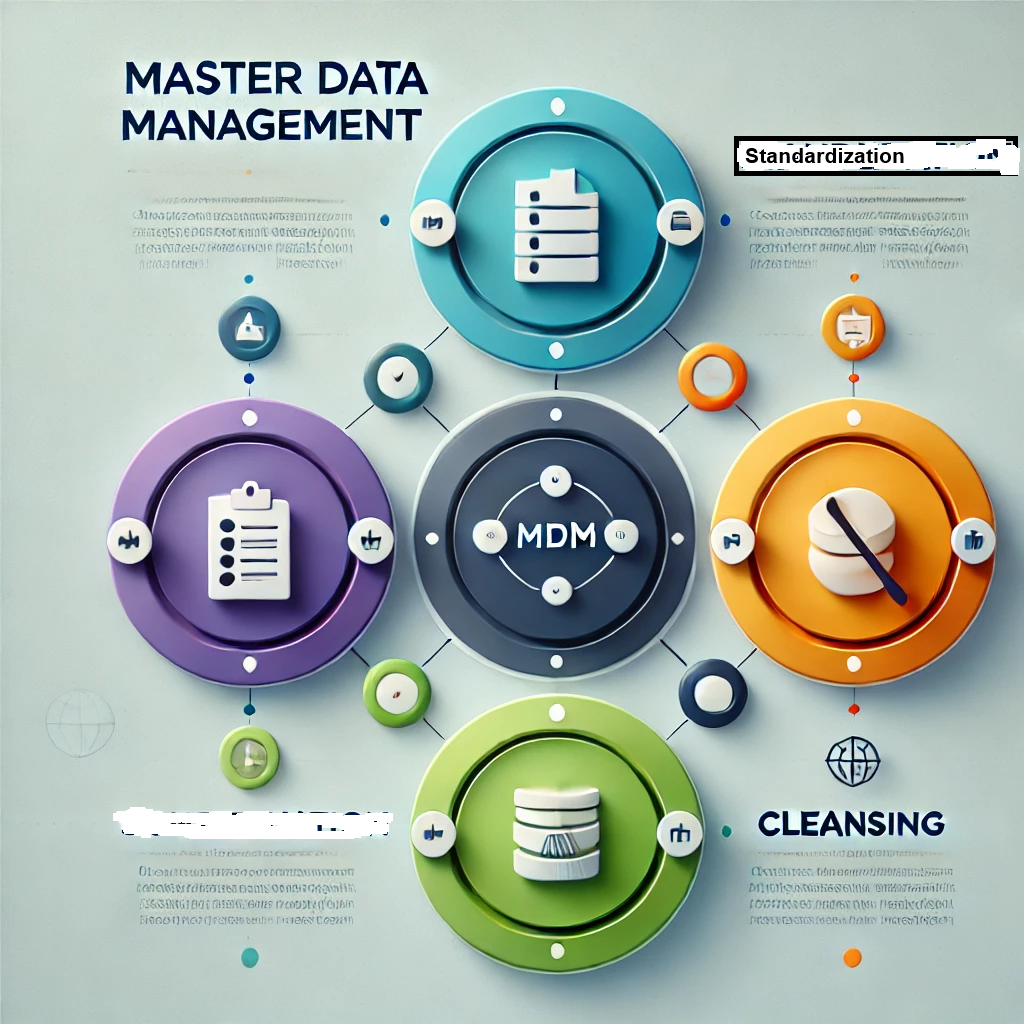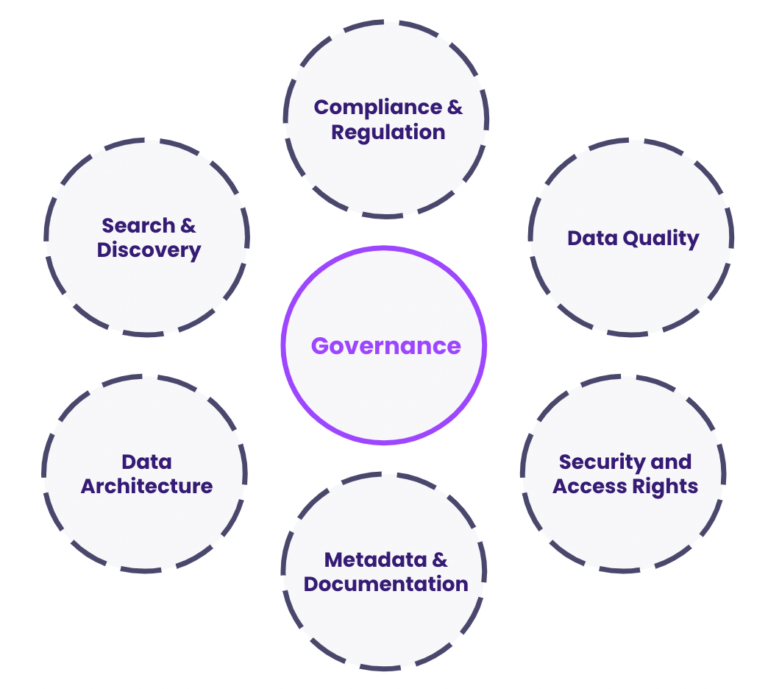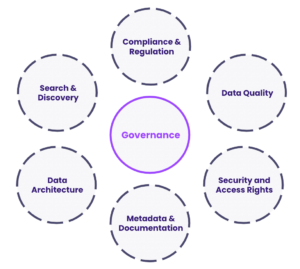Product Master Data Management (PMDM) plays a pivotal role in the manufacturing sector by centralizing, standardizing, and safeguarding product data throughout its lifecycle. This guide delves into each stage of PMDM, including data capture, standardization, integration, and distribution, while outlining actionable best practices for maintaining data quality and integrity. By following these best practices, manufacturers can improve efficiency, reduce costs, and meet regulatory standards, all while leveraging data to enhance product quality and customer satisfaction.
In the manufacturing industry, data is the foundation for efficient operations, accurate demand forecasting, and agile responses to market changes. Among the critical types of data, Product Master Data (PMD) is the lifeblood, encompassing essential details about each product—from specifications and materials to production processes and pricing. Product Master Data Management (PMDM) in manufacturing is essential to achieve operational accuracy, maintain data integrity, and deliver quality output. This blog explores the lifecycle of PMDM, and the best practices to manage and govern data quality and integrity in manufacturing organizations.
Understanding Product Master Data Management (PMDM)
Product Master Data Management refers to the systematic handling of product-related information to ensure consistency, accuracy, and accessibility across the organization. PMDM encompasses processes, technologies, and policies to create a unified view of product data. Effective PMDM impacts various manufacturing facets, from product development and supply chain management to customer satisfaction and compliance.
Why PMDM is Critical for Manufacturers
- Operational Efficiency: Standardized and accessible data enables streamlined operations, reducing downtime and rework.
- Cost Reduction: Accurate data prevents errors and optimizes inventory management, reducing overproduction and stock shortages.
- Regulatory Compliance: In industries like automotive and pharmaceuticals, compliance with strict standards is necessary. PMDM ensures data aligns with regulatory requirements.
- Enhanced Customer Satisfaction: Consistent and accurate product data helps in delivering quality products on time.
The Lifecycle of Product Master Data Management
The lifecycle of Product Master Data Management (PMDM) in manufacturing is essential for achieving operational efficiency, data accuracy, and compliance. This process begins with data creation and capture of product specifications, followed by data standardization to ensure consistency across departments. PMDM then moves into data integration to unify product data from various systems, enhancing accessibility and eliminating silos. Effective data governance and quality assurance processes maintain data integrity, ensuring reliable information for decision-making. Finally, data distribution and archiving secure accessibility for relevant teams while managing historical data. Following best practices like centralized governance, regular audits, and MDM technology investments, manufacturers can optimize their product data for accuracy, security, and operational excellence.
Managing product master data is not a one-time task; it follows a lifecycle that involves multiple stages. Let’s delve into each phase of the lifecycle.
1. Data Creation and Capture
At this stage, data related to a new product is generated or collected from various sources, such as R&D, engineering teams, or suppliers. This data may include materials, specifications, compliance details, cost components, and lifecycle statuses.
- Key Processes: Data sourcing, validation, and initial quality checks.
- Challenges: Variability in data formats from different sources can create inconsistencies.
2. Data Standardization
After collection, the data must be standardized to ensure uniformity across different departments. Standardization means defining data formats, units of measurement, and coding standards so that data is comparable and compatible.
- Key Processes: Defining attributes and standard codes, transforming raw data into unified formats.
- Challenges: Different departments may have different interpretations of certain data points.
3. Data Integration
Data from various sources (such as ERP, CAD, or PLM systems) must be integrated to provide a single, coherent view. This process enables stakeholders to access reliable product data regardless of the originating system.
- Key Processes: Merging data into a single platform, ensuring data completeness.
- Challenges: Integrating legacy systems with modern platforms can create data silos.
4. Data Governance and Quality Assurance
Governance ensures data is accurate, complete, and compliant with organizational standards. At this stage, data quality metrics are applied to monitor and maintain data integrity, minimizing the risk of errors.
- Key Processes: Applying data governance policies, validating data accuracy.
- Challenges: Ensuring stakeholders adhere to governance policies consistently.
5. Data Distribution and Accessibility
Once validated, product data must be readily available to all relevant stakeholders, from manufacturing teams to customer service and logistics. Accessibility helps teams make data-driven decisions quickly.
- Key Processes: Setting up role-based access controls, enabling data access across departments.
- Challenges: Balancing security with accessibility can be complex.
6. Data Archiving and Disposal
Over time, certain product data may become obsolete and must be archived or disposed of. Proper archiving practices preserve historical data for future reference or analysis without cluttering active databases.
- Key Processes: Data storage, data lifecycle management.
- Challenges: Balancing storage costs with the need to retain historical data for regulatory or analytical purposes.
Best Practices for Managing and Governing Data Quality and Integrity
To maintain data quality and integrity in manufacturing, organizations should implement robust data governance frameworks and adopt Master Data Management (MDM) solutions. Key best practices include conducting regular data audits to identify and resolve discrepancies, defining data quality KPIs (such as accuracy and completeness), and ensuring data security with role-based access controls and encryption. Establishing a data ownership model promotes accountability, while data cleansing and enrichment processes help remove outdated information and enhance dataset completeness. Employing change management strategies ensures seamless updates to data policies, supporting consistent data quality and integrity across the organization.
To ensure that Product Master Data remains accurate, accessible, and relevant, manufacturers should adopt a set of best practices. Below are some effective strategies to manage and govern data quality and integrity.
1. Implement a Centralized Data Governance Framework
A centralized framework ensures that all product data follows the same standards and governance rules across departments and locations. This framework should cover data ownership, data stewardship roles, and quality control measures.
- Actionable Tips:
- Assign data stewards responsible for overseeing data quality.
- Define clear guidelines for data access, editing, and auditing.
2. Invest in Master Data Management (MDM) Technology
An MDM platform centralizes product data and integrates with other systems (ERP, CRM, PLM) to unify data across the organization. A robust MDM solution helps automate data quality checks and supports data governance policies.
- Actionable Tips:
- Choose an MDM platform that allows flexible integration with legacy systems.
- Ensure the platform supports real-time data updates for quick access.
3. Regular Data Audits
Periodic audits help detect and correct data discrepancies, reducing the risk of downstream errors. Data audits should be scheduled based on the complexity and criticality of data in different areas of the organization.
- Actionable Tips:
- Implement automated audit tools for large datasets.
- Address gaps in data or issues with outdated information.
4. Define and Track Data Quality KPIs
Setting key performance indicators (KPIs) helps monitor data quality over time. Common KPIs include accuracy, completeness, consistency, and timeliness. Tracking these KPIs supports proactive data management, preventing issues before they escalate.
- Actionable Tips:
- Set benchmarks for each KPI and review them quarterly.
- Share KPI results with relevant teams to promote accountability.
5. Enhance Data Security
Ensuring data security is critical for data integrity. This includes setting up secure access controls, regular monitoring, and data encryption where necessary. Security measures not only protect data but also ensure it is not tampered with.
- Actionable Tips:
- Apply role-based access control to limit data editing rights.
- Encrypt sensitive data fields, such as proprietary product details.
6. Establish a Data Ownership Model
Define data ownership to clarify responsibility for data quality and maintenance. By assigning owners to specific data categories, it’s easier to enforce accountability, ensuring that data remains accurate and reliable.
- Actionable Tips:
- Assign data ownership to departmental leaders who oversee product lifecycle stages.
- Provide regular training on data handling responsibilities for owners and stewards.
7. Adopt Data Cleansing and Enrichment Practices
Periodic cleansing processes remove duplicate, outdated, or irrelevant data, while enrichment practices ensure data remains complete and useful for future applications. Cleansing and enrichment activities help maintain an updated, high-quality dataset.
- Actionable Tips:
- Schedule quarterly data cleansing for high-traffic databases.
- Add relevant new information to enhance existing datasets, such as adding product upgrades.
8. Use Change Management to Support Data Policies
As technology and product lines evolve, it’s essential to update data management policies. Effective change management ensures that the entire organization adapts to new data governance rules without confusion or resistance.
- Actionable Tips:
- Communicate policy updates with clear timelines and implications.
- Provide training sessions to keep staff informed of changes.
Conclusion
The lifecycle of Product Master Data Management is a critical journey that manufacturing organizations must carefully govern to maintain data quality and integrity. From initial data capture to disposal, each stage demands attention to detail, consistency, and strategic management. By implementing best practices such as centralized governance, MDM technologies, regular audits, and data ownership models, manufacturers can ensure their product data remains accurate, secure, and accessible across departments. These practices not only support daily operations but also position manufacturers to thrive in a competitive, data-driven industry.




